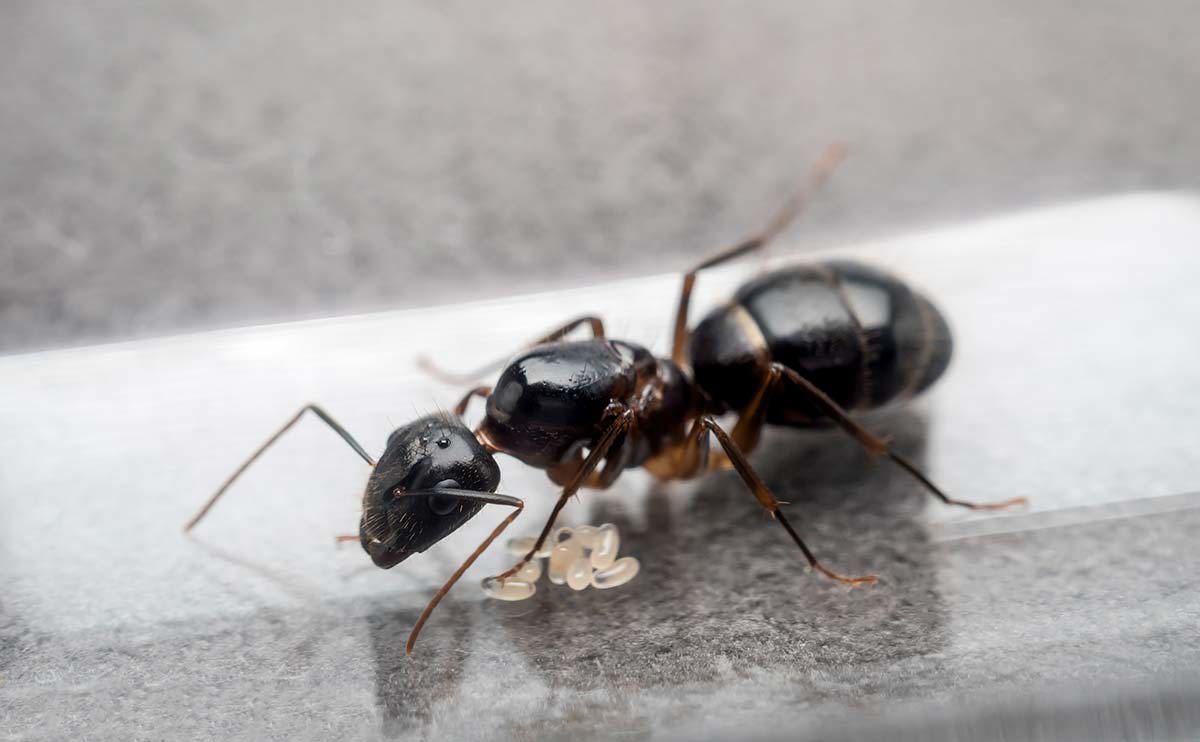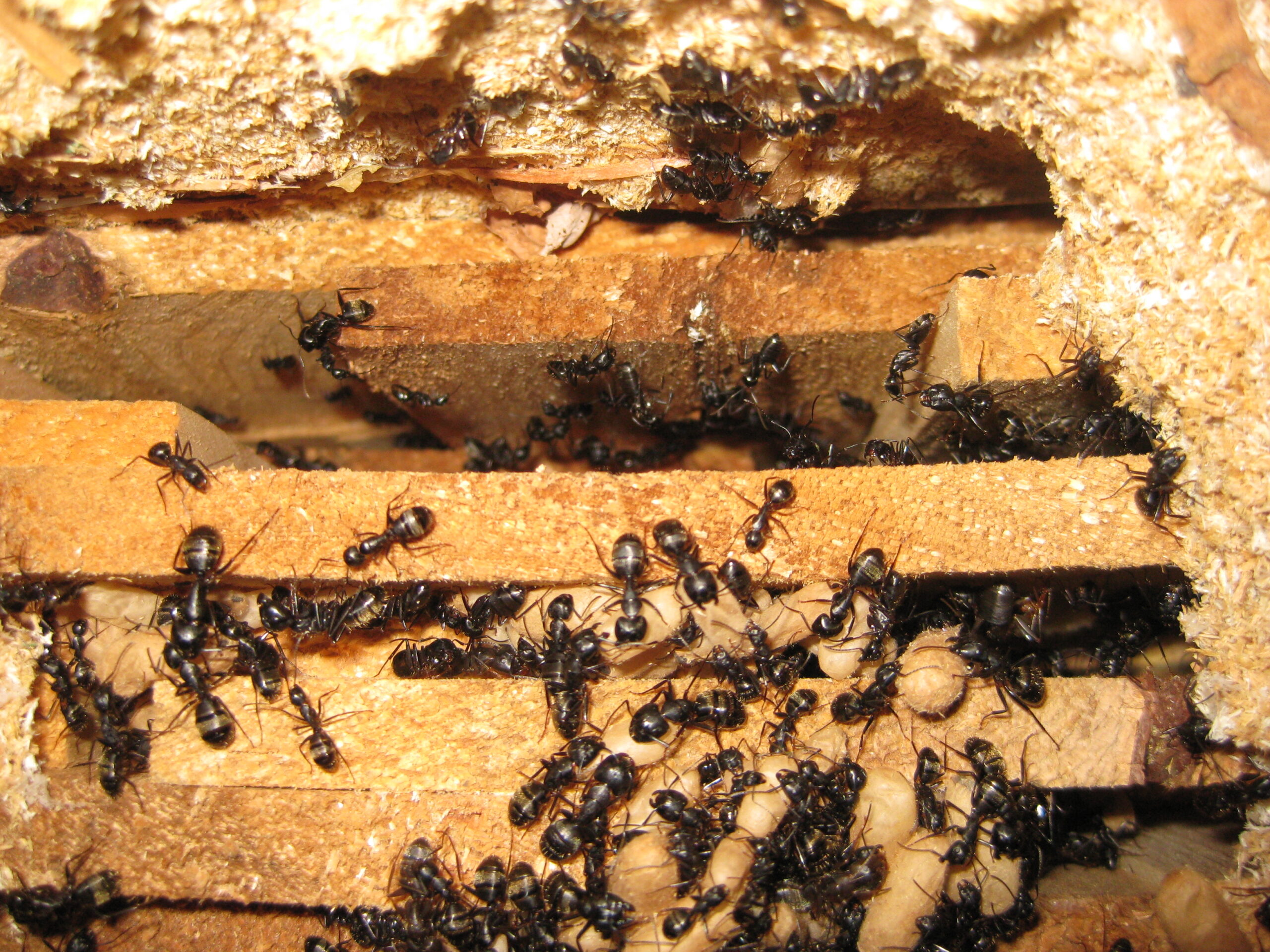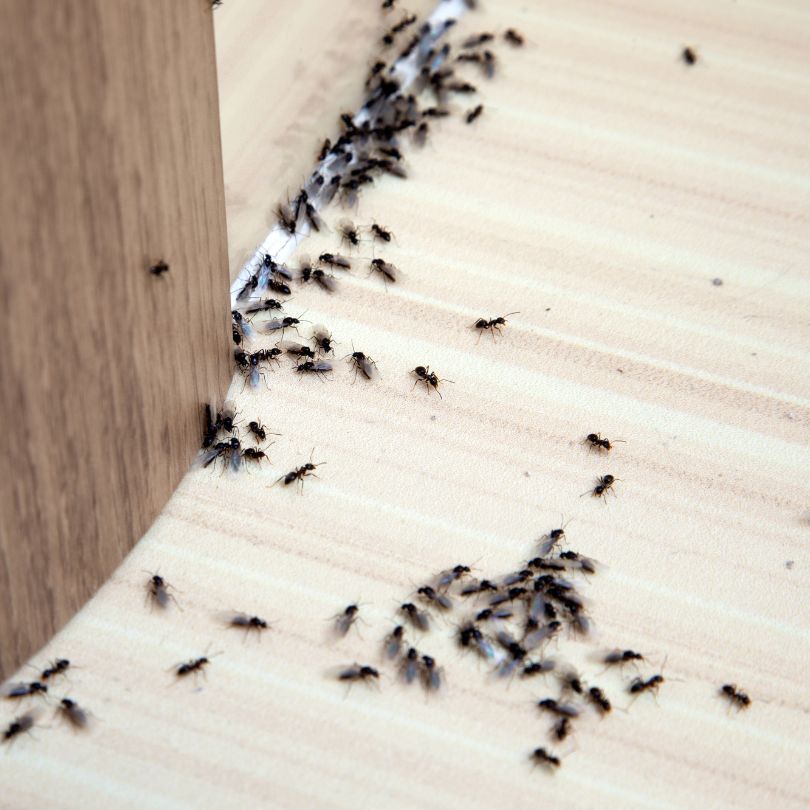Ant Extermination and the Types of Ants in Florida
Serving Pensacola, Cantonment, and Molino
Florida’s balmy climate and year-round warm weather attract both residents and visitors in large numbers. Along with the sunshine and lush scenery, however, come a variety of pests, including ants. These small intruders may be found both indoors and outdoors, quickly becoming a nuisance when they form extensive colonies. In places like Pensacola, Cantonment, and Molino, homeowners and businesses often find themselves dealing with ant-related challenges that can grow larger if not addressed early.
Below is an in-depth look at ant extermination and a discussion of some of the most common ants found in Florida. By understanding the habits, risks, and control methods associated with these pests, it becomes much easier to protect your living or working environment from unwanted invasions.
Introduction
Ants may appear harmless at first, especially if only a few are seen scuttling across a kitchen counter or out in the yard. Yet a seemingly minor ant problem can quickly escalate due to the highly organized nature of these insects. Ants operate on scent trails, leaving behind a chemical marker that other members of their colony can follow to food and water sources. Once a colony establishes itself near a steady supply, ant numbers can grow exponentially.
In Florida’s Gulf Coast region, where the climate remains relatively warm and humid, ants can thrive year-round. Seasonal rains encourage them to seek shelter indoors. Dry spells prompt them to search for moisture in kitchens or bathrooms. Even a single loose crumb on the floor can attract scout ants, who then signal the rest of the colony to follow suit.
Beyond the annoyance of discovering these persistent creatures in your food prep areas, ants can create health and safety issues. Some species deliver painful stings, while others contaminate surfaces and stored foods. Certain ants can weaken wood or drywall by nesting within walls, potentially leading to structural concerns. By taking a thorough approach to ant control, you not only eliminate existing infestations but also help prevent future problems from taking root.

Understanding Ant Infestations in Florida
Florida’s subtropical climate, marked by high humidity and moderate-to-warm temperatures, is a key factor in the proliferation of ants. These conditions provide ample sources of water, plus plentiful opportunities to find insects, seeds, fruits, and other sustenance. Dense vegetation, sandy soils, and nearby wetlands offer ideal environments for many species to nest and thrive.
While ants serve ecological purposes outdoors by aerating soil and cleaning up organic debris, conflicts arise when they find their way indoors. Homes, offices, and commercial spaces in Pensacola, Cantonment, or Molino often have accessible pathways that ants exploit. Cracks in foundations, gaps around windows and doors, and even poorly sealed utility lines can become thoroughfares for curious foragers.
Seasonal variations also affect ant behavior:
- Rainy Periods: Heavy downpours can flood outdoor nests, compelling ants to move to higher, drier ground. Buildings become attractive shelters, and colonies may set up shop in wall cavities or under floors.
- Dry Spells: When rainfall is scarce, ants actively seek out water sources such as leaky pipes or air conditioning condensate. If these sources are located inside a home or business, ants will likely remain nearby.
By the time an infestation is visible, it may already be substantial. Many nests are concealed behind walls, in insulation, or beneath floorboards. Treating only the ants seen on counters or floors may provide temporary relief, but it will not eliminate the heart of the colony. Determining the specific species and locating its nest are critical first steps for any thorough extermination strategy.
Common Ant Species in Florida
Though Florida hosts a wide range of ant species, a handful frequently cause issues around homes and businesses. Here are some of the most prevalent ones in and around Pensacola, Cantonment, and Molino:
- Carpenter Ants
Carpenter ants are among the largest ants encountered in residential settings. Typically black or red and black, they tunnel through wood—not by consuming it, but by clearing out galleries for nesting. If left unchecked, they can weaken wooden support structures. They often gravitate toward moist or decaying wood, such as in crawl spaces or near roof leaks. - Fire Ants
Fire ants are recognized for their reddish-brown color and aggressive disposition. They build noticeable mounds in yards, gardens, and other outdoor spaces. When their mound is disturbed, they swarm intruders and can inflict painful stings that produce itchy, inflamed pustules. These stings can be particularly concerning for individuals with allergies or small pets that spend time outside. - Ghost Ants
Ghost ants are tiny and have a pale or translucent abdomen, which gives them an almost “invisible” appearance. They often invade homes searching for sweet or greasy foods and will nest within wall voids, potted plants, or other sheltered areas. Because they can split colonies easily, they can be among the most challenging ant species to fully eradicate without a deliberate plan. - Argentine Ants
Argentine ants are small and brownish, known for forming massive colonies with multiple queens. They travel in large foraging trails, looking for food and water. Once established, Argentine ants can outcompete other species, dominating the area around a structure. Their ability to create satellite colonies makes them a persistent and invasive presence if they are not addressed comprehensively. - White-Footed Ants
White-footed ants feature dark bodies and paler feet (tarsi). They typically build nests in vegetation and shrubs, though they will move indoors if they detect suitable sustenance or moisture. Colonies can grow very large, and repeated sightings of these ants often indicate multiple nesting sites. - Pharaoh Ants
Pharaoh ants are minuscule, yellowish ants commonly found in warm, humid locations. They can dwell in hidden crevices and quickly form multiple sub-colonies when disturbed, a process called “budding.” Because of this habit, partial treatments may inadvertently prompt the colony to spread even further.
Recognizing which ant species is present lays the groundwork for choosing the most effective extermination strategy. Each ant type exhibits different behaviors, feeding preferences, and nesting patterns, so a tailored approach is typically the best path to success.

Reasons to Seek Professional Ant Extermination
Some property owners resort to self-help tactics like over-the-counter sprays or bait traps. While these might kill some ants on contact or temporarily reduce visible numbers, they seldom destroy colonies at their source. Ant colonies are often vast, featuring multiple queens continuously replenishing the population. If those queens survive, the infestation can roar back in just a few weeks.
Professional extermination offers several clear benefits:
- Targeted Solutions: Proper identification leads to the use of specialized treatments that match the habits of the invading ant species. This reduces the chance of an endless cycle of regrowth.
- Reduced Risks: Trying to handle potentially aggressive ants, such as fire ants, can result in painful stings. Experienced teams know how to manage these insects and limit potential harm to people and pets.
- Long-Term Prevention: Once existing colonies are neutralized, ongoing measures can protect against future invasions. This can include advice on sealing cracks, proper food storage, and regular check-ups to intercept new colonies early.
- Comprehensive Inspections: Trained professionals can detect hidden nests, satellite colonies, and other issues contributing to an infestation—something that might be missed with a do-it-yourself approach.
In addition, certain ants pose structural or health hazards if given free rein. Carpenter ants can cause wood damage over time, fire ants can threaten outdoor activities, and pharaoh ants can spread in large buildings by splitting off into numerous sub-colonies. A prompt response to a known ant issue saves both worry and potential costs down the line.
Our Approach to Ant Control
Inspection and Identification
The first phase involves a thorough exploration of the property to find nesting sites, foraging trails, and possible entry points. Inspectors often focus on locations with moisture, such as bathrooms, kitchens, and laundry areas, or any areas where food might be accessed. Determining the species type is key to effective eradication.
Custom Treatments
Different ants require different strategies. Some situations benefit from slow-acting baits, which worker ants bring back to feed the colony. Other infestations might call for perimeter treatments that block entry points. Outdoor colonies, like those of fire ants, often demand targeted applications to disrupt entire mounds.
Consideration of the Environment
Many residents of Pensacola, Cantonment, or Molino prefer methods that minimize broader ecological impact. When feasible, techniques can focus on the ants’ nesting or foraging sites instead of broad-spectrum treatments that might affect beneficial insects. Targeted baiting in strategic locations helps limit unintended consequences while still reducing ant numbers.
Ongoing Prevention
Ant infestations often recur if a property remains an attractive option for foraging or nesting. Closing cracks and crevices, repairing water leaks, and maintaining a clean kitchen can significantly lower the odds of re-infestation. Periodic check-ups or inspections can catch minor problems early, sparing homeowners and businesses from dealing with full-scale invasions in the future.
Education and Guidance
Clear communication with homeowners or facility managers helps sustain ant control efforts after the primary treatment. Understanding the conditions that draw ants, such as accessible crumbs or unsecured trash, can help property owners maintain a less appealing environment for these pests. A partnership approach to pest control tends to yield stronger, longer-lasting results.

Service Areas
This comprehensive ant control service extends throughout Pensacola, Cantonment, and Molino. These communities, situated in the Florida Panhandle, experience consistent warm weather and frequent rainfall, which in turn supports thriving insect populations. Whether you live in a suburban home in Pensacola, operate a small business in Cantonment, or manage a property in Molino, you may face ant issues at any point in the year.
By offering services across multiple areas, it is possible to address the specific challenges each region might pose. Some neighborhoods may see more issues with particular species, such as fire ants in open, grassy spaces or ghost ants in dense, landscaped areas. A well-rounded approach means any property owner can benefit from strategies tailored to local conditions and common ant varieties.
Why Choose Us
- Local Familiarity
Working in Pensacola and the surrounding regions brings valuable insight into local conditions. Familiarity with common nesting sites, seasonal weather patterns, and typical ant species allows for more precise and effective control measures. - Attention to Detail
A thorough inspection and methodical approach are the backbone of successful ant control. Whether it is spotting a hidden trail behind appliances or identifying tiny cracks in a foundation, no detail is too small to address. Consistent vigilance helps root out the deeper causes of infestations. - Tailored Methods
A technique that works for one ant species might be ineffective against another, and that is why flexibility matters. By selecting a method based on the type of ant, the size of the colony, and the layout of the property, it is possible to tackle the problem efficiently without wasted effort. - Education as a Priority
Supporting property owners with tips and recommendations for keeping ants at bay is an essential step. Sharing knowledge on how to reduce indoor attractants, such as leftover food or sugary spills, is key to long-term success. Strong teamwork between the professional and the client can curb ant activity before it gets out of hand. - Commitment to Thorough Results
The objective is not to offer a quick fix but rather to deliver a comprehensive solution that addresses the root cause of ant activity. By tracing infestations to their source colonies and applying targeted measures, it becomes more likely that ants will not simply relocate elsewhere on the property.
If you are dealing with an active ant infestation or suspect that one might be forming, taking steps sooner rather than later can prevent the issue from escalating. Living or working in an area like Pensacola, Cantonment, or Molino makes ant control an ongoing necessity, given the favorable climate for these insects. By focusing on thorough inspection, correct species identification, and a combination of targeted treatments, any ant problem can be significantly reduced.
Contact us to learn more or schedule your service. A customized plan aimed at eradicating specific ant colonies and discouraging their return can help restore comfort and peace of mind. Rather than contending with endless trails of ants in the kitchen or yards teeming with fire ant mounds, a deliberate approach ensures that each colony is handled appropriately. In doing so, you can focus on enjoying the many benefits of living in this sunny region instead of constantly worrying about unwelcome pests.
From addressing tiny ghost ants sneaking in through window gaps to handling fire ant mounds in a suburban lawn, the goal remains the same: provide a safer, cleaner, and more inviting environment for you, your family, and your guests. By combining proactive measures, ongoing education, and an understanding of local conditions, it is entirely possible to keep ant infestations at bay. Whether you have a single-family home, a commercial business, or a multi-unit property, a personalized plan that addresses local species and typical nesting habits lays the groundwork for a long-lasting solution.
